Introduction
While attending the APS NSW gathering hosted by Sutherland Group I had the pleasure of visiting Joan Zande’s garden. This is a native garden designed with nature. Joan applied many design principles in this relatively small residential garden. Reconstructed after 40 years, it was as a collaborative effort between Joan and an obviously very talented landscaper , Greg Hopcroft.
First impressions
Walking up from the front gate along the stepped pathway within the narrow space between two adjoining houses I sense that there is something different about to happen. Then suddenly I am sure. Straight ahead is a Japanese style downpipe, the first sculptural focus to attract attention.
I turn right and can’t help but exclaim Wow!! …. I see for the first time the surprisingly expansive garden that draws my eye up to and around the rugged enclosing sandstone cliff.
An informal flagstone pathway invites immediate entry to the ‘amphitheatre’ garden. The main access is further along where I fully appreciated the garden diversity.
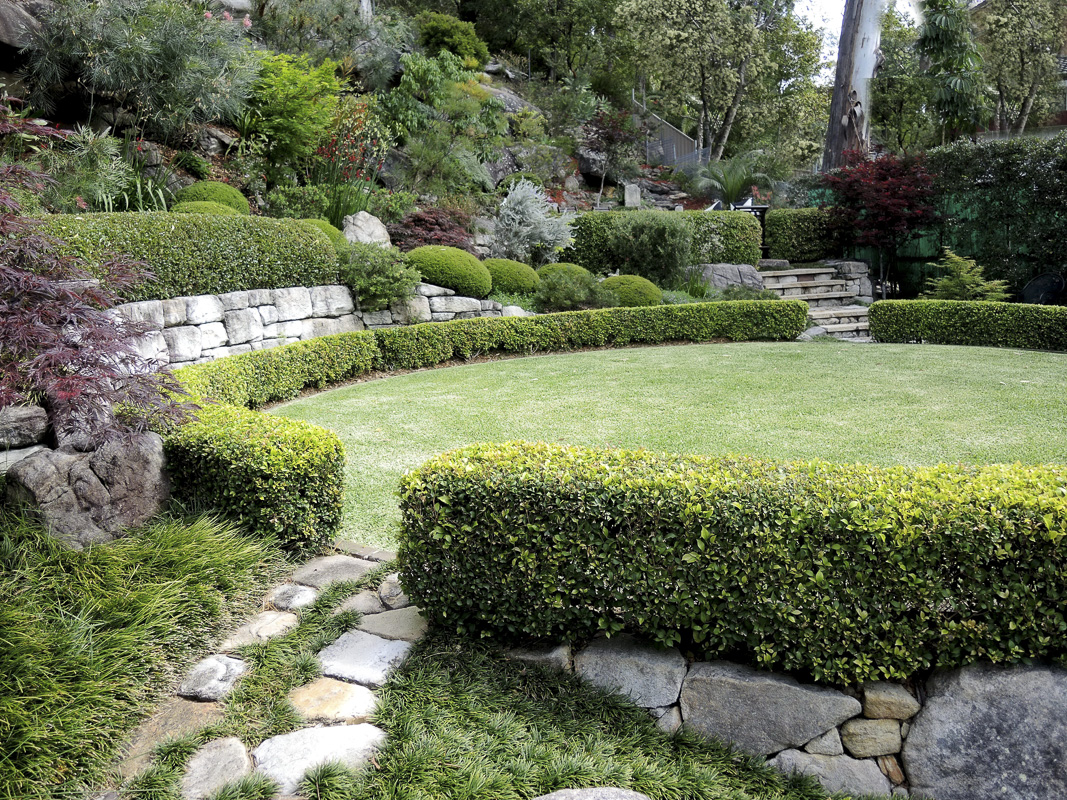
Sandstone escarpment – borrowing from the landscape
The almost vertical crescent of sandstone rock face more than nine metres high sweeps diagonally across the site. The rock is irregular enough to support a range of small shrubs, orchids and covers to conceal and reveal just the right amount of sandstone as the dominant physical and visual element.
This has defined the garden design strategy through its dramatic sculptural forms, textures and colours. Strong horizontal lines of the rock strata repeat in the rock walls, in the scree rockery, in the hedges and in the plant massing.
The ‘borrowed landscape’ of the bushland above the rock face also enhances the garden. The subtle diversity of the planting below is inspired by the nearby Joseph Banks Native Plants Reserve at Kareela.

The circular lawn – beautifully geometric
As I approach the garden along the upward sloping side entry path, a wide horizontal band of green underlines the garden view to progressively reveal a dramatic circular manicured grass terrace.
The crescent-shaped sandstone rock face defines the regular shape of this unexpected formal lawn. The existing sloping landform was reshaped by cut and fill to complete this strongly geometric garden terrace. Although the circular lawn and low hedge is visually dominant, it is a carefully integrated element within the garden. The contrast between the level lawn and the vertical face of the escarpment provides visual drama. The strong horizontal lines of rock strata, stone walls and the surrounding hedge ties everything together.
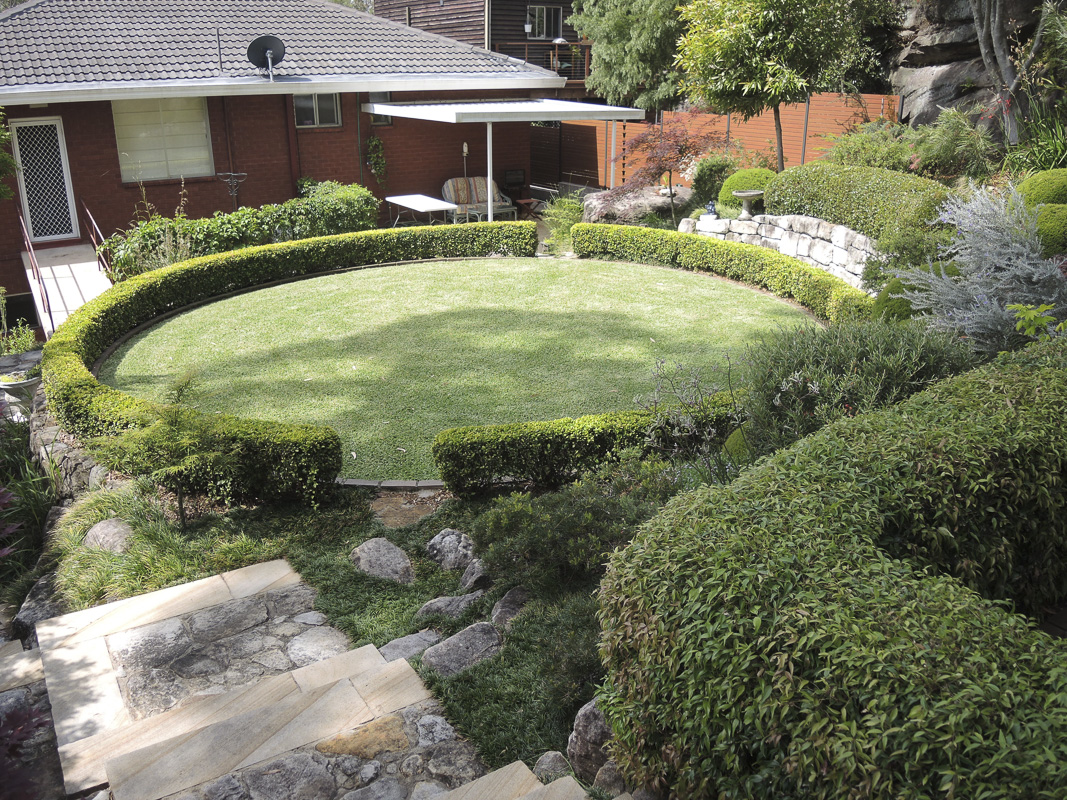
Hedge and gardens – predominately native plants
The circular hedge of Syzygium ‘Allyn Magic’ enhances the formal design providing a safe edge where the garden terrace falls away to lower levels.
From various viewpoints, the circular hedge effectively sweeps the eye into the garden to focus on the differing sculptural or botanic elements. Interestingly, the hedge attracts the eye into a group of formal Sannantha virgata spheres or balls. These seem to ‘bounce’ up into the sloping scree garden below the sandstone cliff.
The contrast in form between the dramatic circular lawn and hedge with the irregularity and informality of the rockery garden merging with the sandstone cliff provides visual interest and diversity. Carefully selected and managed shrubs provide an ever-changing living mosaic of colour, form and texture complementing the sculptural sandstone.
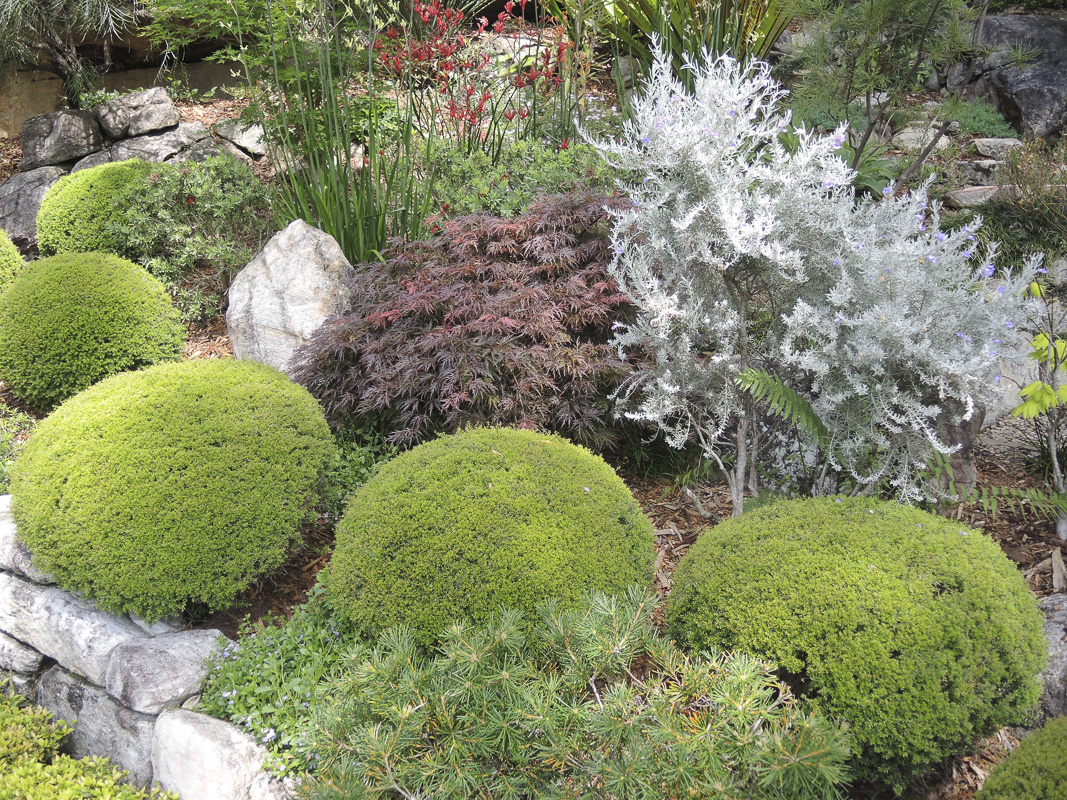
Access and circulation – natural curves
The natural curved form of the sandstone escarpment defines the garden geometry. It diverges away from the base of the cliff the ‘scree’ slope rockery garden becoming wider. A ‘natural’ rock stairway passes through clusters of small plants accessing the various levels of terraced garden. Sandstone slab step treads continue the sympathetic choice of ‘hard landscape’ materials ensuring the garden colour palette is complementary and integrated.
Dry laid sandstone block walls repeats the circular form of the lawn and hedge, extending the visual impact.
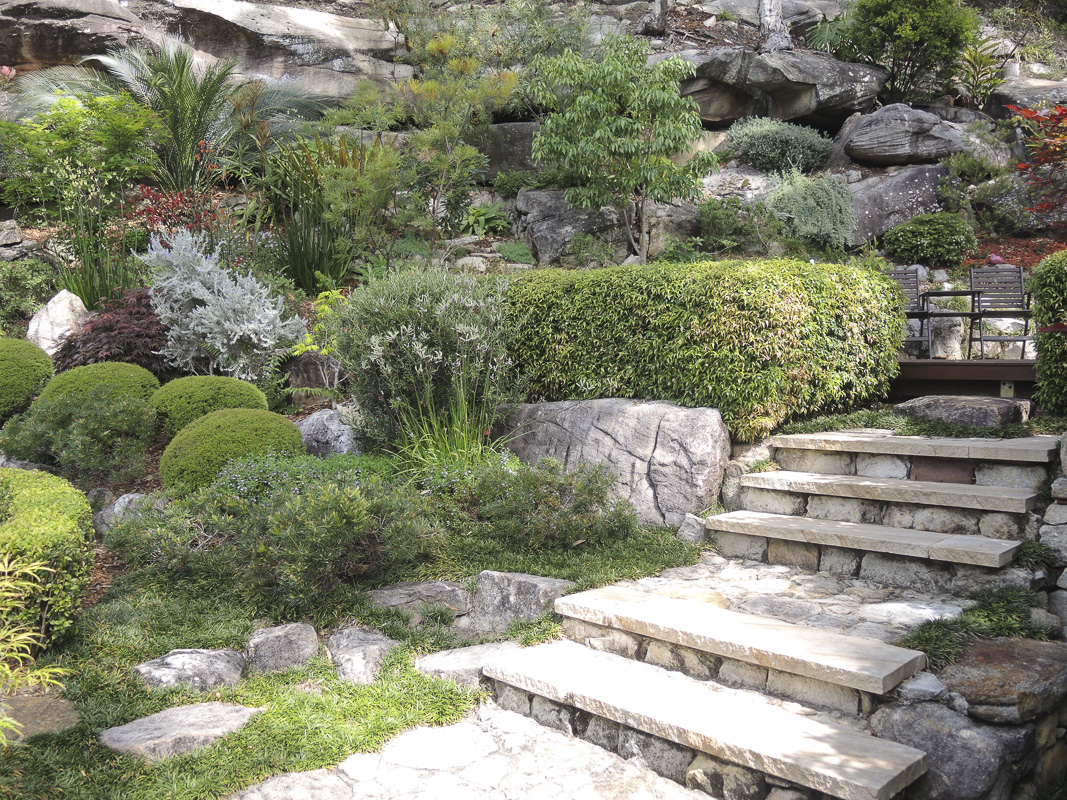
Upper terraces – with integrated gardens
High up on the rock escarpment, one can see how effectively this steep sloping site has been used. It provides two major and distinctive garden ‘places’. Each has differing uses and attributes but both are surrounded and integrated with gardens of appropriate native plants.
The upper terrace, complete with timber deck, seating and fire pit, offers an attractive place for both winter and summer activities. The circular lawn is visually dominant but still an integral component of the garden with many uses.
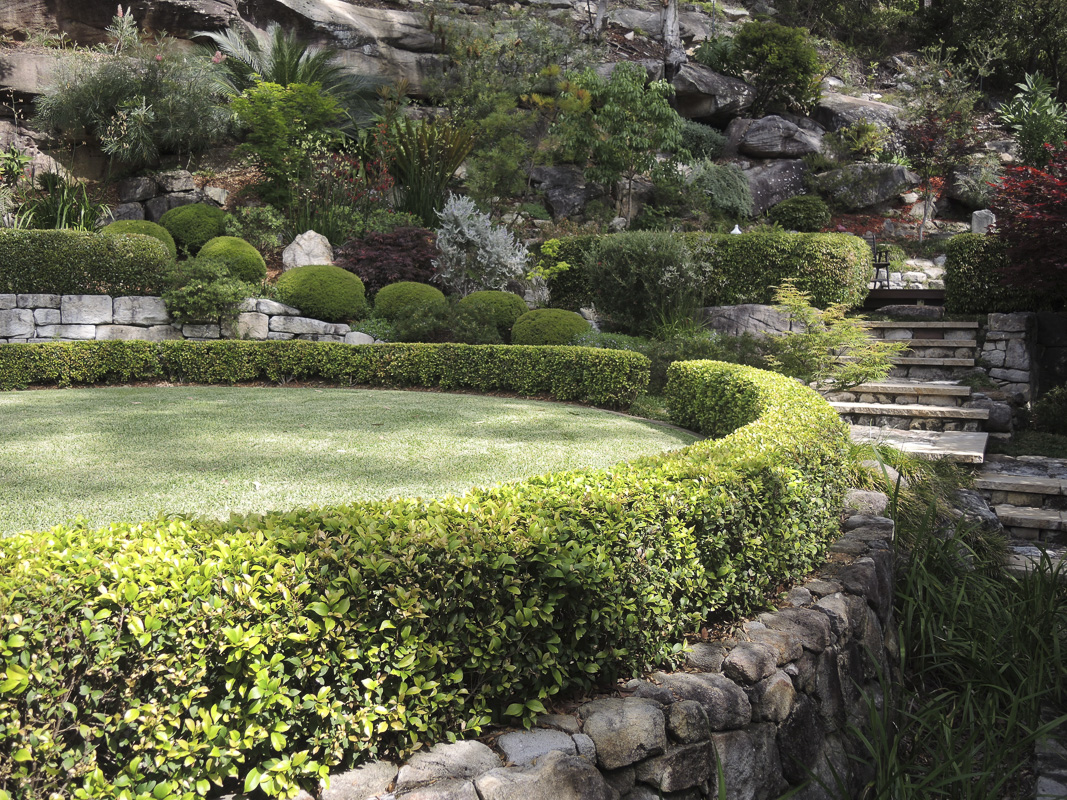
Linking gardens – meandering naturally
The gardens meander throughout the various levels. They effectively link the main spaces in both irregular or ‘natural’ character as well as more formal geometry.
The garden designers chose the plant material for its suitability, function and aesthetic qualities. The plants complement or contrast with the character of the sandstone. A few well-chosen exotic tree species provide focal points of seasonal interest and added diversity.
Collectively all of the garden materials and plants create a very interesting and unified garden. It entices you to progressively explore the various differing spaces and environments.
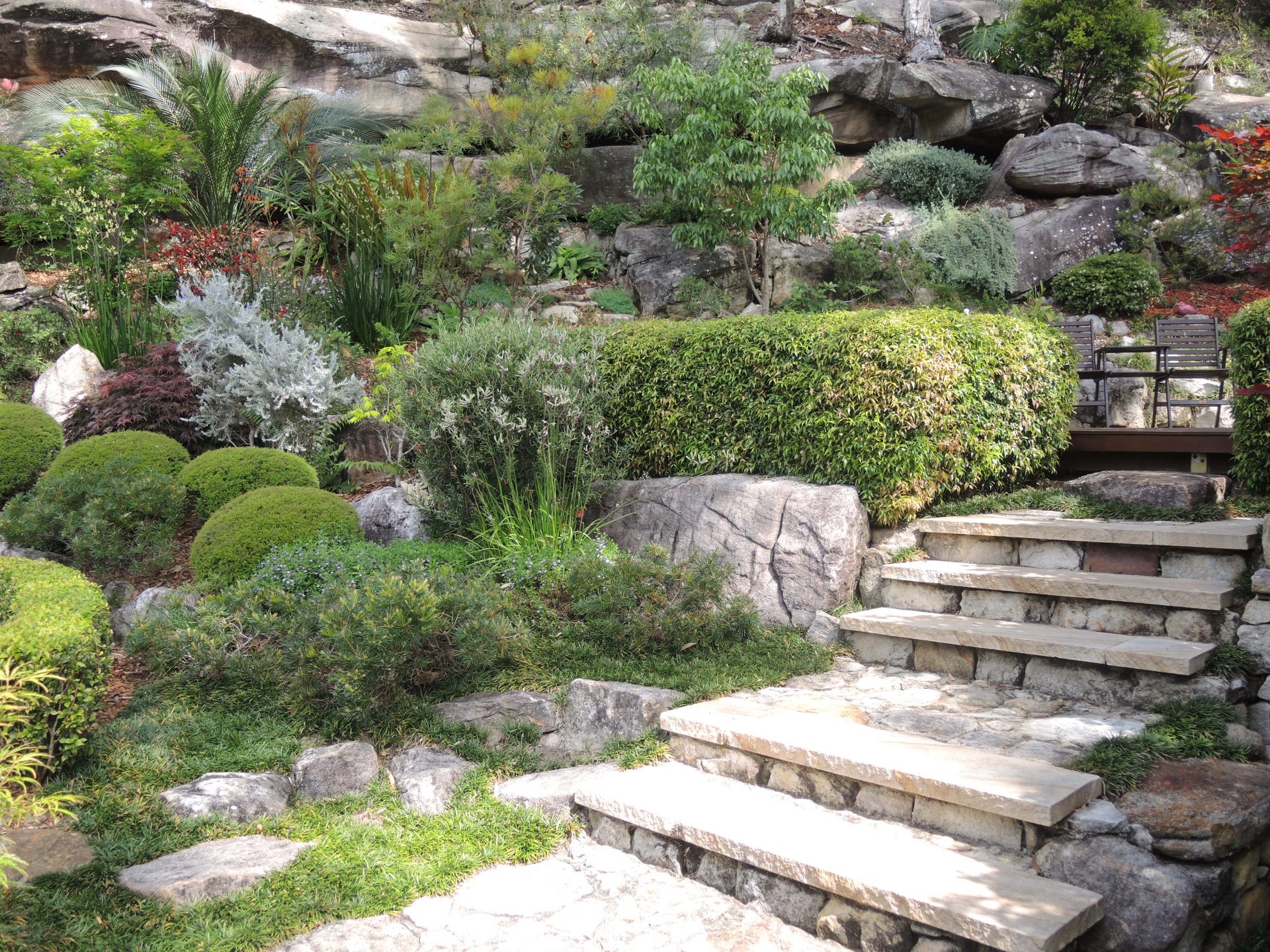
A native garden, designed with nature
This garden strongly exhibits what I like to call ‘Design with Nature’. This is where the natural geology, form and aspect of the site is a strong influence on the detail design. The site works in close association with the functional parameters and aesthetic values set by the garden user and designer. The result is that this garden belongs just right and could probably not be successfully established anywhere else.
It exhibits that interesting juxtaposition of natural vegetation forms with appropriately modified specimens. This gives it visual contrast and other aesthetic reasons. This garden offers a huge opportunity for a dedicated native plant enthusiast to establish an amazing canvas on which to display a range of species suited to numerous ecological niches. What more could you ask?
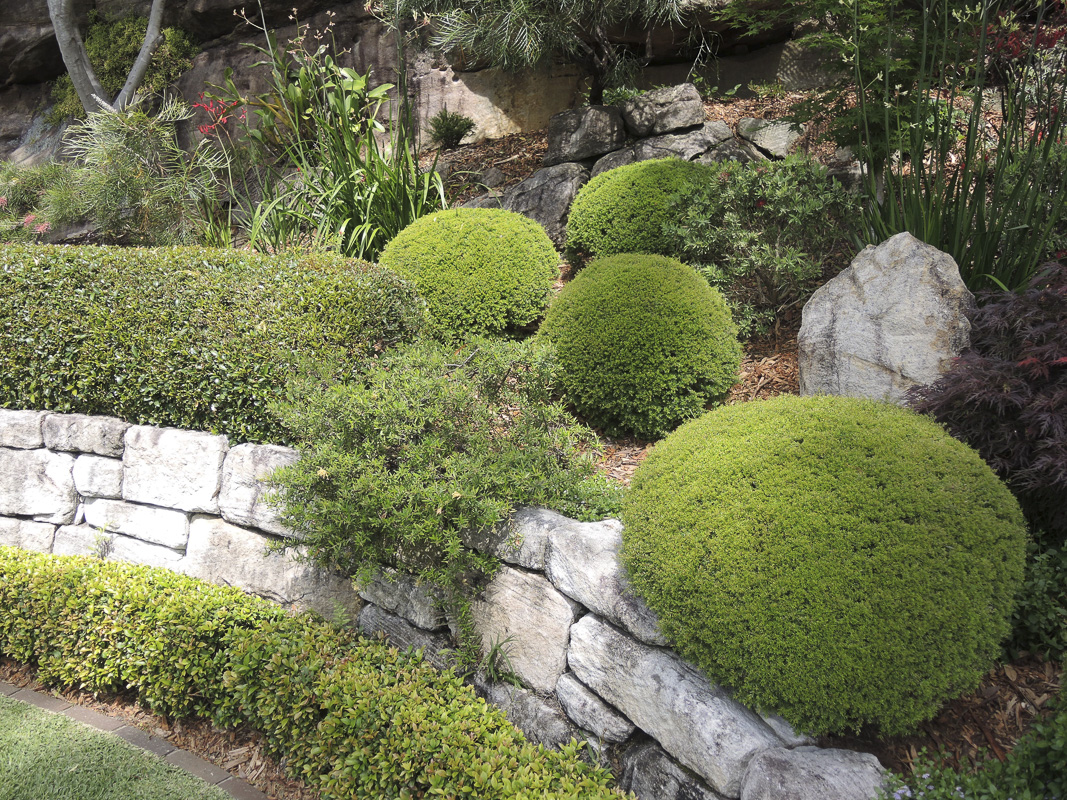
This article by Lawrie Smith AM, Leader of the ANPSA Garden Design Study Group. It originally appeared in the Garden Design Study Group Newsletter 106, February 2019.
 Australian Native Plants Society (Australia)
Australian Native Plants Society (Australia)